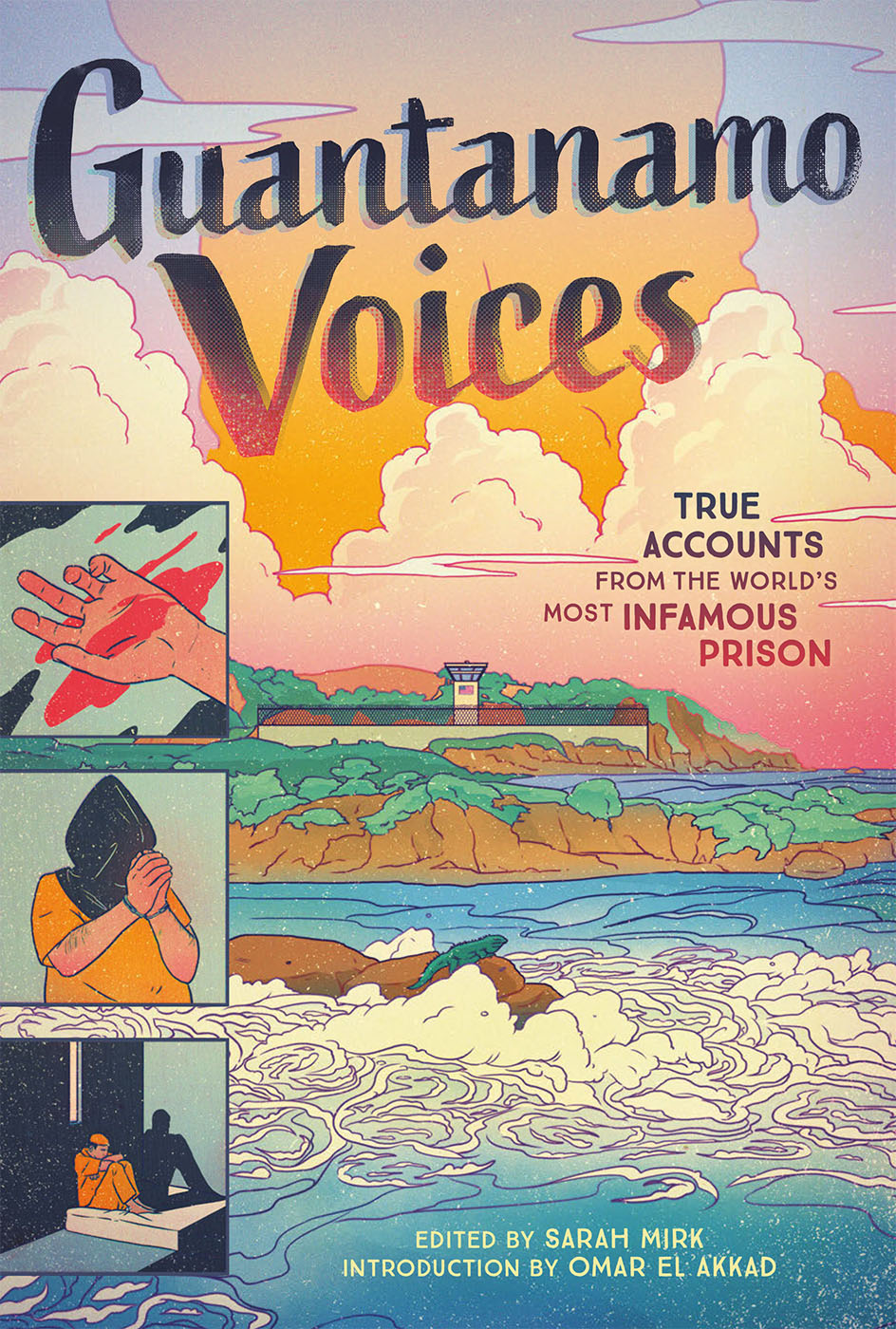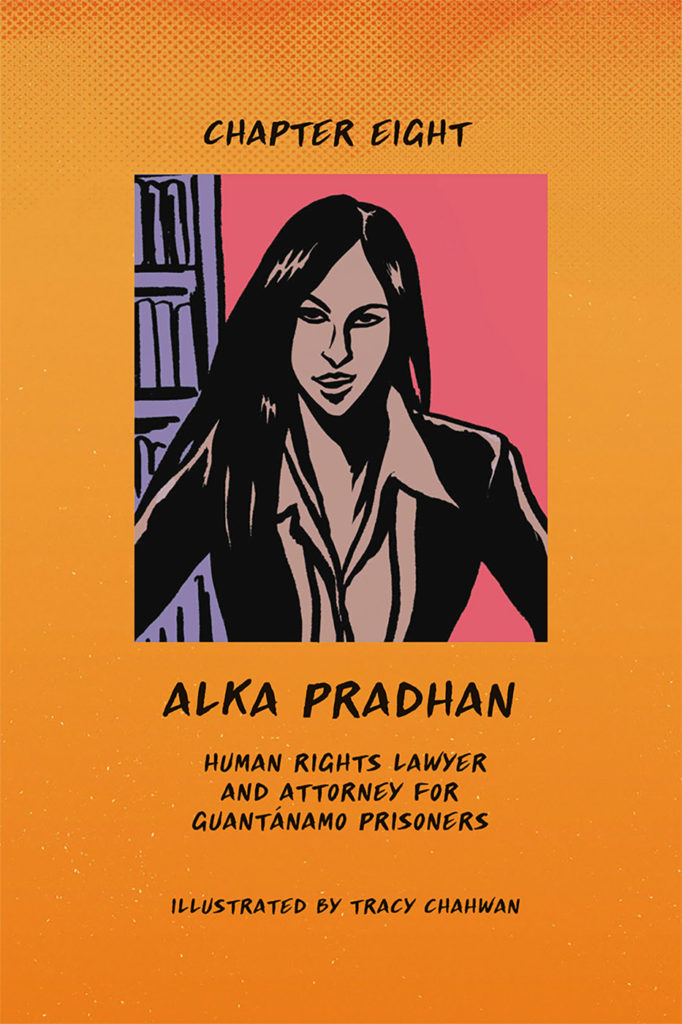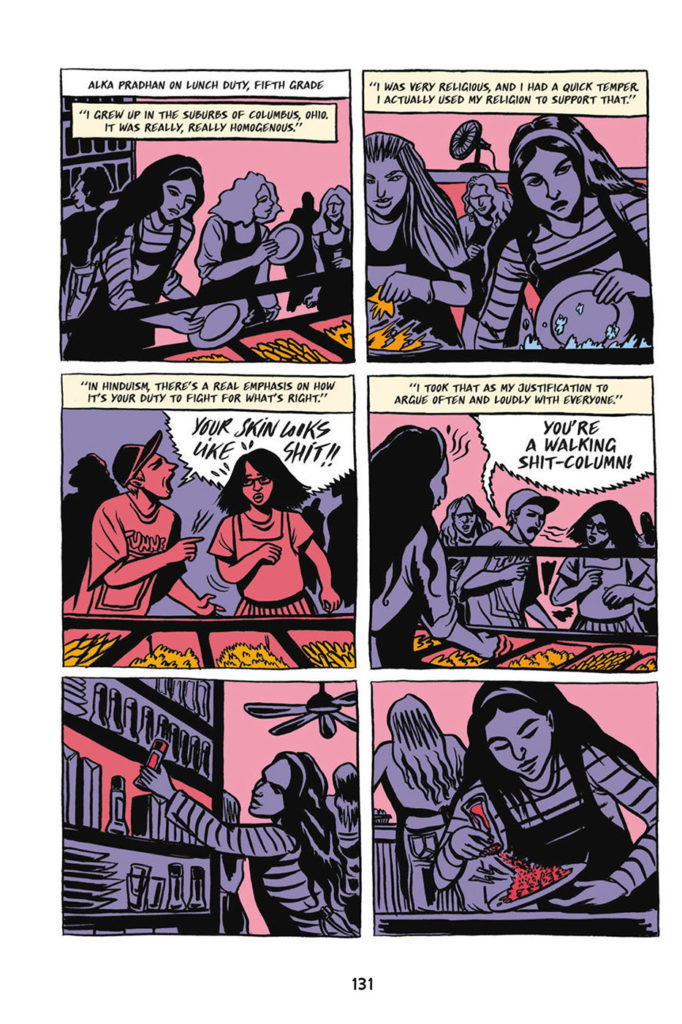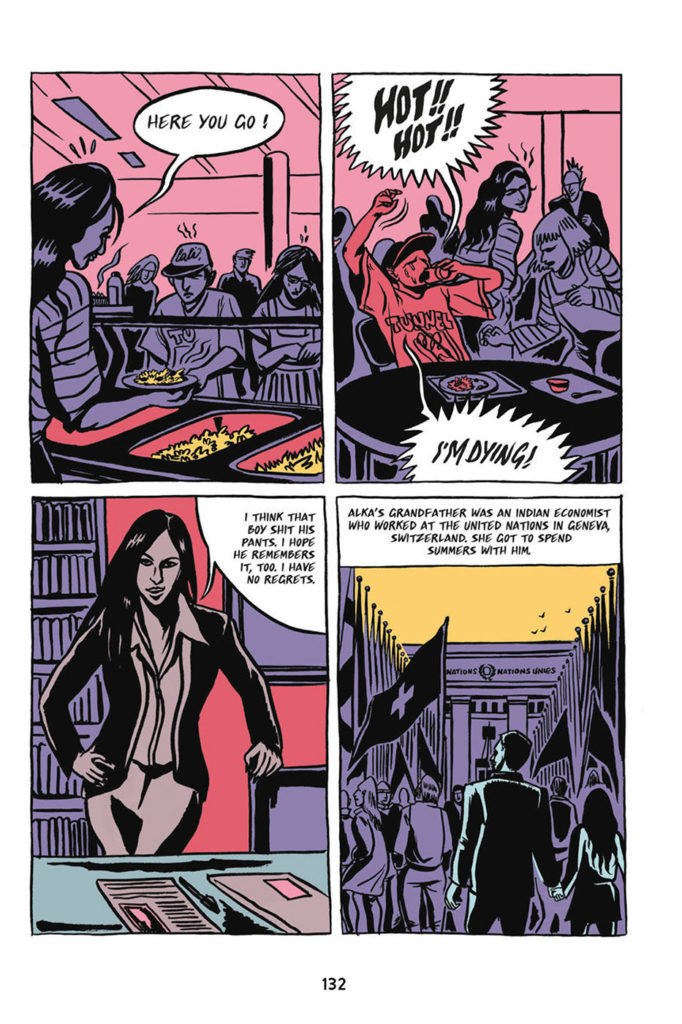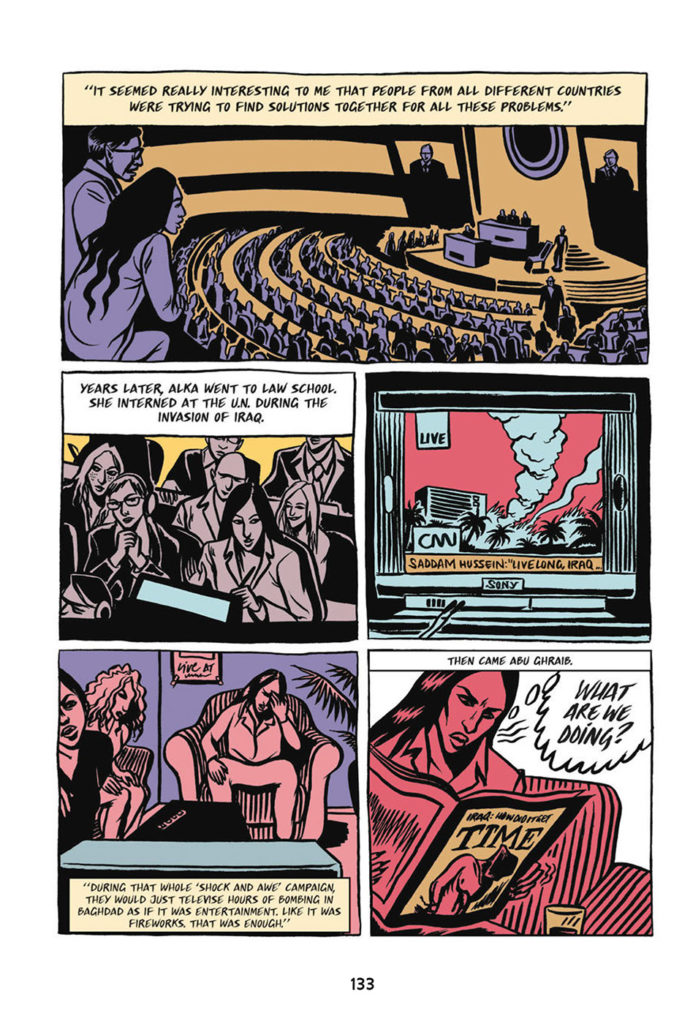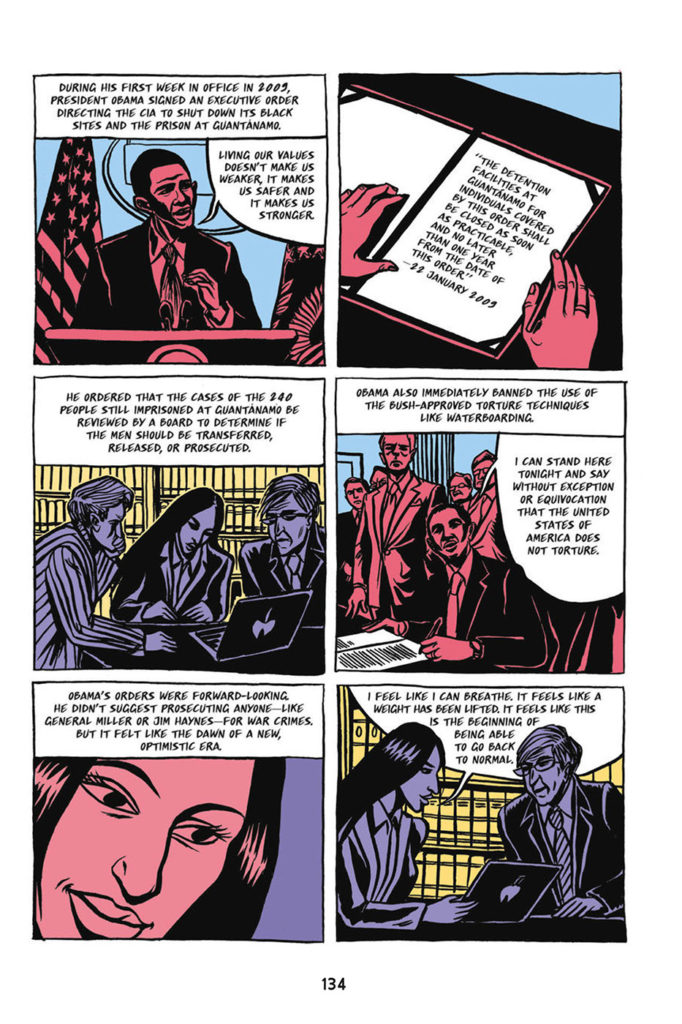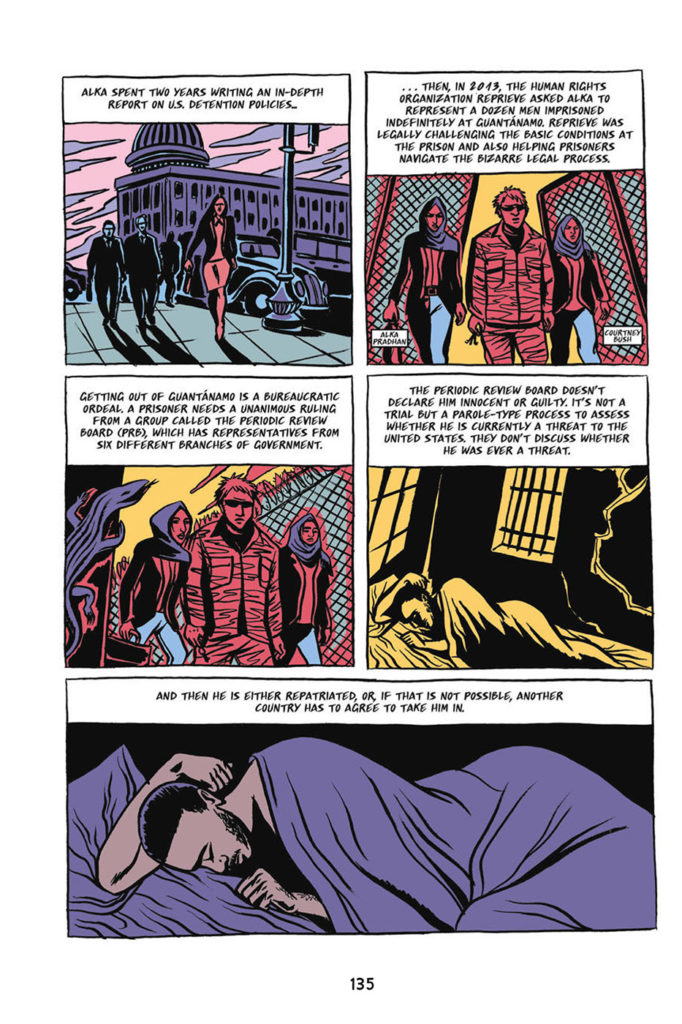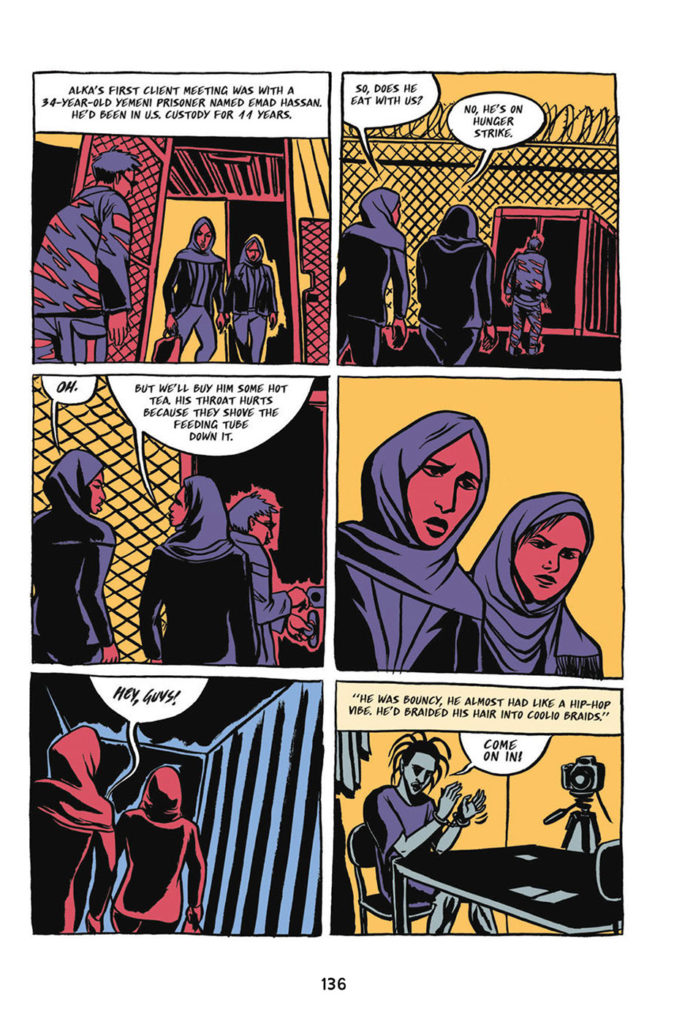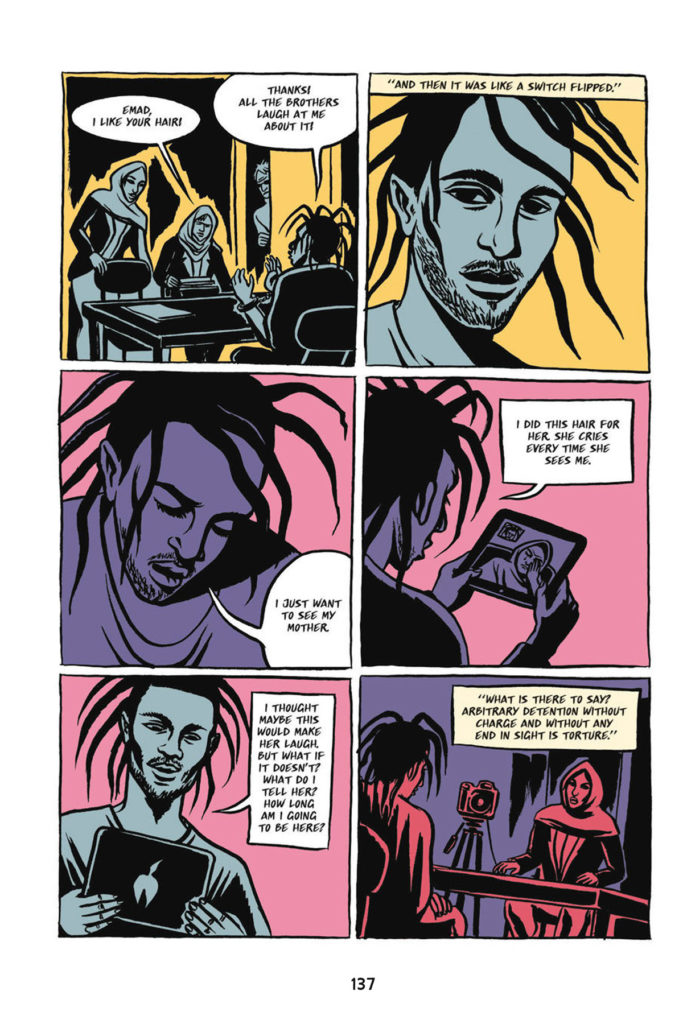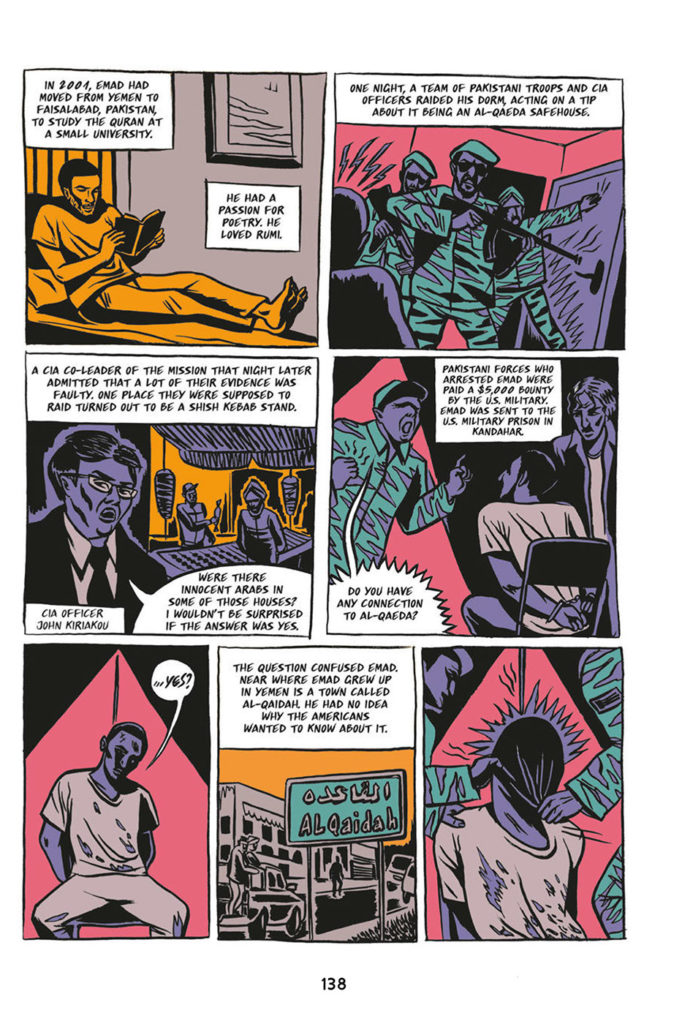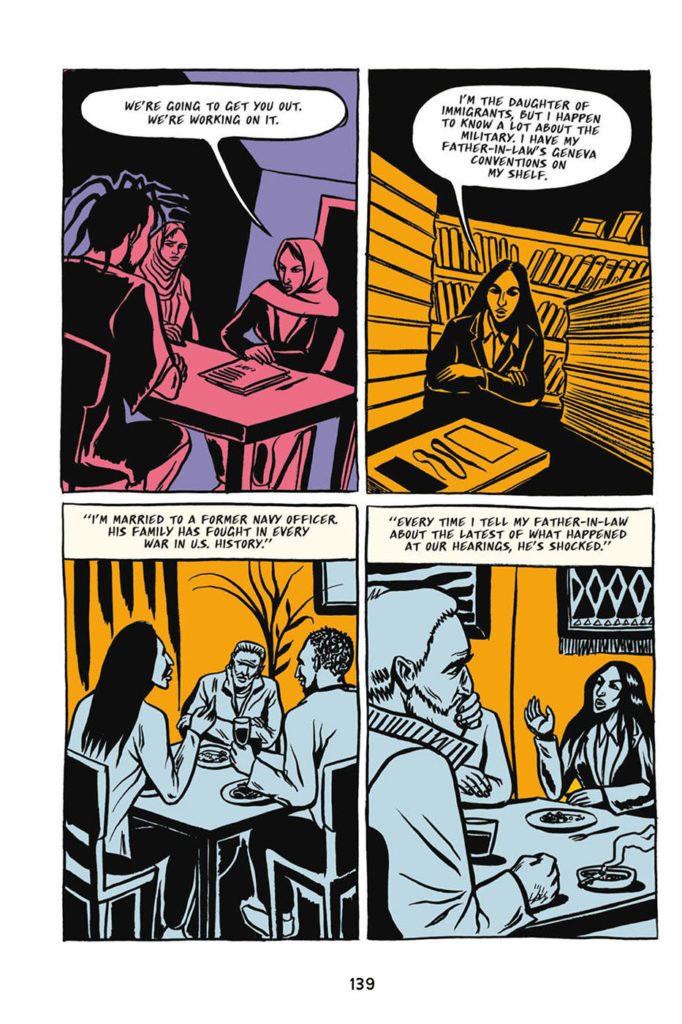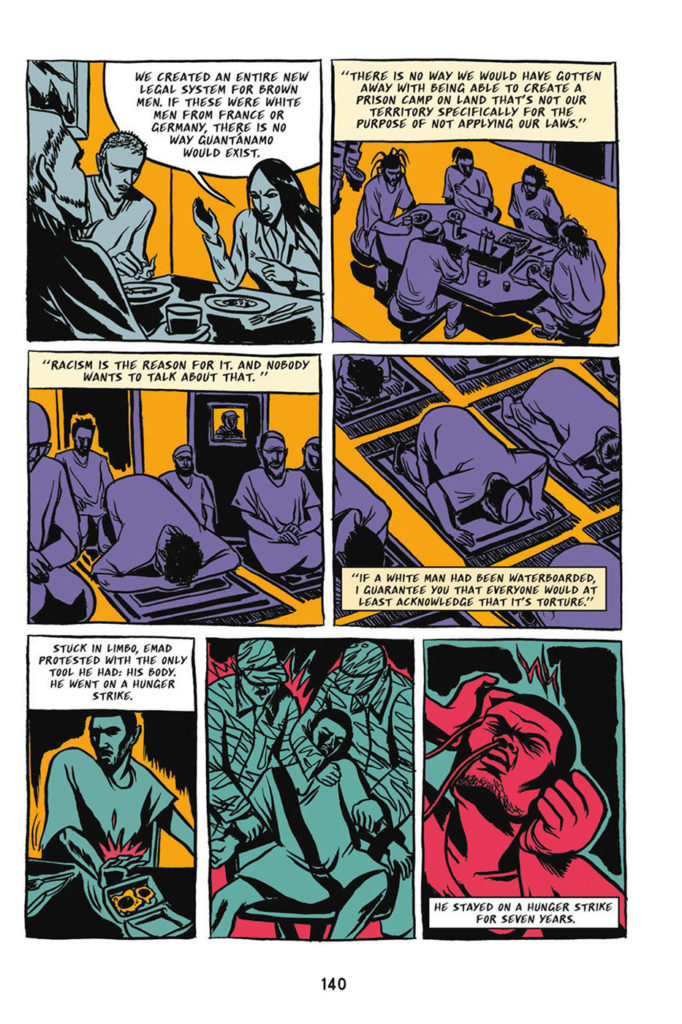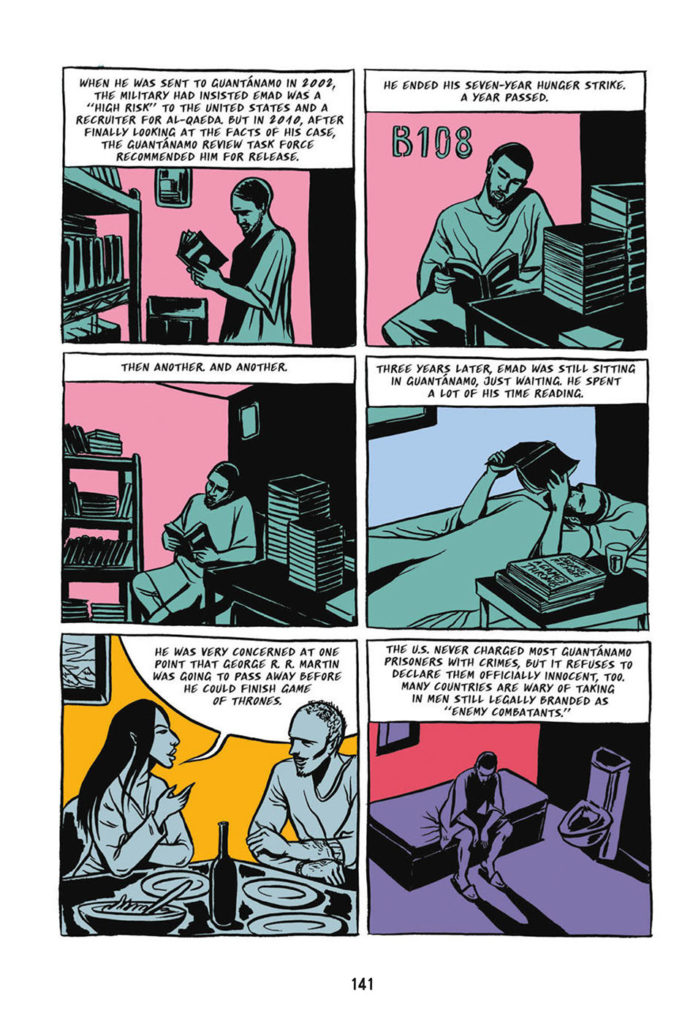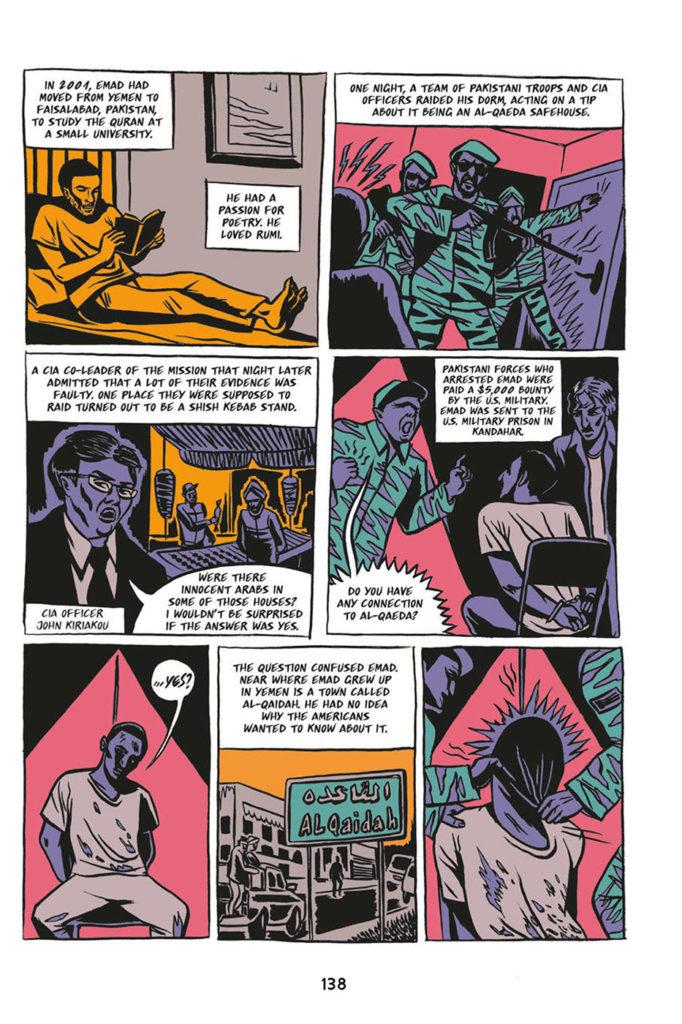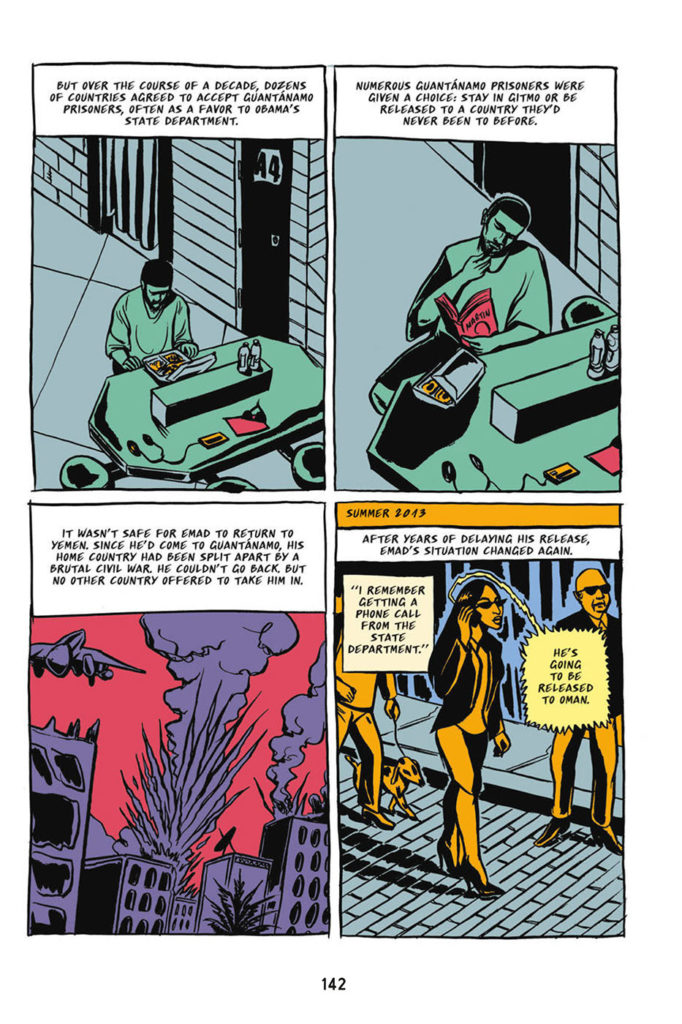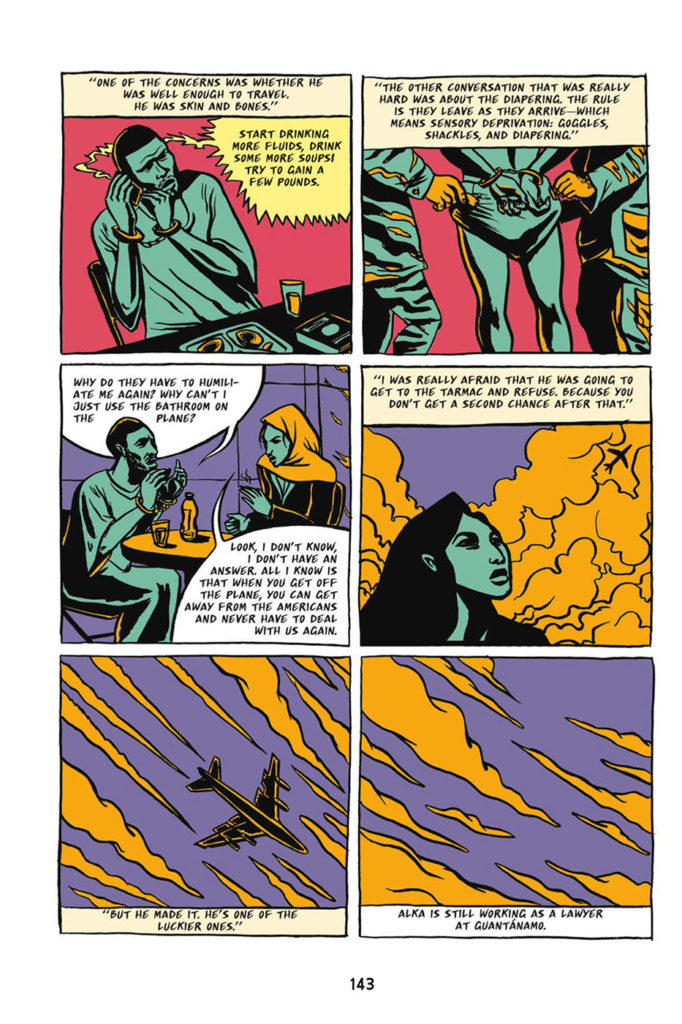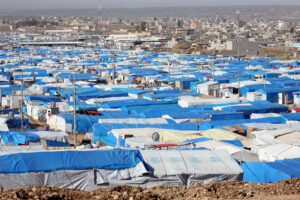Excerpt from Guantánamo Voices: True Accounts From the World’s Most Infamous Prison
A graphic novel, edited by Sarah Mirk, with an introduction by Omar El Akkad Abrams ComicArts (June 2020)
ISBN 9781419746901
Sarah Mirk
First let’s talk about language — is Guantánamo a prison?
The language we use to describe our world shapes our perception and understanding. And the language used to describe Guantánamo is hotly contested. The U.S. government describes the facility as a “detention camp” or a “detention facility” and the inhabitants as “detainees.” Human rights advocates often call Guantánamo a “concentration camp.” Journalists make all kinds of choices in describing Guantánamo (GITMO), from adopting the government’s terminology to calling it an “offshore prison” or a “prison fortress.” My goals with my language choices in this book are to accurately describe reality and to use words that everyone can understand. The word “detainee” does not have the cultural weight of the word “prisoner”—I’ve been detained many times (by a TSA guard searching my bag, by transit police checking my ticket, or by an overly long work meeting), but I have never been a prisoner. I think the government’s intentional choice of tepid, bureaucratic language to describe Guantánamo downplays the years people have spent and continue to spend in custody. In this book, I made the choice to describe Guantánamo as a “prison” and the men confined there as “prisoners.” I made this choice after consulting the Merriam-Webster Dictionary definitions of prison and prisoner:
Prison: a state of confinement or captivity
Prisoner: a person deprived of liberty and kept under involuntary restraint, confinement, or custody
Guantánamo Voices is a graphic novel, but is it real?
I’ve worked to make this graphic narrative a nonfiction accounting of real life. The chapters in this book are all based on original interviews I did, as well as interviews conducted by Columbia University’s Rule of Law project, and journalistic books about Guantánamo. Whenever possible, the illustrations in this book are based on photo and video references. However, because it’s impossible to document what happened in every scene described in this book and the military does not allow media to photograph prisoners and many prison operations at Guantánamo, the artists have used their creativity to fill in the gaps.
The chapter here features the story of human rights attorney Alka Pradhan, defending a man incarcerated at Guantánamo, and is illustrated by Lebanese graphic artist Tracy Chahwan:



